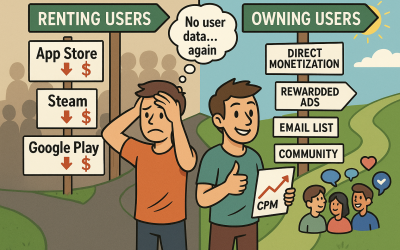The Queen’s Gambit & the Right Monetization = Success
“The Queen’s Gambit” did more than entertain; it transformed the perception of chess. For many, chess was an archaic game, reserved for the intellectual elite. The show’s portrayal of Beth Harmon as a young, relatable genius battling personal demons made chess appealing and accessible.
Contents
Let me introduce Beth -)….
Beth’s story begins in an orphanage, where she discovers chess through the orphanage’s janitor, Mr. Shaibel. Despite the bleakness of her surroundings, chess becomes her sanctuary, a world where she can exercise control and showcase her prodigious talent. Her early life is marked by hardship, including the trauma of losing her parents and struggling with a substance dependency that begins in the orphanage, where the children are routinely given tranquilizers.
Viewers, inspired by her journey, turned to online platforms to try their hand at the game, leading to a significant spike in new players on Chess.com.
A brief introduction on Chess.com
In 2005, Erik Allebest and Jay Severson purchased the Chess.com domain, initially intending it as a forum for chess enthusiasts. However, surging demand for online gameplay led them to develop a comprehensive chess portal. Launching a subscriber-based site in 2007, Chess.com has since evolved into a powerhouse, boasting hundreds of millions in annual revenue and a vast user base.
Chess.com & Queens’ Gambit
Continuing on my “The Queen’s Gambit & the Right Monetization = Success’ post, The pandemic has sparked a renaissance for many online activities, and chess is no exception. Thanks to the popularity of Netflix’s “The Queen’s Gambit,” millions have rediscovered this ancient game, flocking to platforms like Chess.com.
In the months following the release of “The Queen’s Gambit,” Chess.com saw traffic soar to record levels. According to digital intelligence platform Similarweb, visits to Chess.com spiked dramatically, cementing the platform’s position as the leading online chess site.
Cultural Phenomenon
The cultural phenomenon created by “The Queen’s Gambit” sparked a massive surge in chess participation worldwide, and Chess.com was perfectly poised to harness this newfound enthusiasm.
The influx of new players provided a larger audience for the freemium model and ad-based revenue streams. The excitement generated by “The Queen’s Gambit” translated into increased ad impressions and higher engagement with premium features, including lessons and other tools. Moreover, the platform’s effective use of rewarded video ads found an even broader and more enthusiastic audience, further boosting revenue.
Monetization Models: Freemium and Beyond
Chess.com employs a freemium model, where basic services are free but premium features require a subscription. Free users experience ads, while premium members enjoy an ad-free experience with additional benefits like unlimited lessons and advanced analysis tools. This dual approach ensures a steady revenue stream, but the real game-changer is how Chess.com leverages rewarded video ads.
The Role of Rewarded Video Ads in Monetization

Rewarded video ads offer a win-win scenario for both the platform and its users. These ads allow users to access premium features temporarily or earn in-game rewards by watching short video advertisements. This model is highly effective in keeping users engaged without alienating them with intrusive ads. For Chess.com, rewarded video ads provide a significant revenue boost while enhancing the user experience.
Why Rewarded Video Ads Work
Rewarded video ads have become a cornerstone of modern app and web monetization strategies. Here’s an expanded look at why these ads are particularly effective:
-
High Engagement
Users are significantly more likely to watch rewarded video ads in full because of the direct benefits they receive. Unlike standard video ads, which users may skip or ignore, rewarded ads offer tangible incentives, such as in-game currency, extra lives, or access to premium features. This structure naturally leads to higher ad completion rates. When users know they will gain a specific reward by watching an ad, they are more motivated to engage.
-
Better User Experience
Continuing on my “The Queen’s Gambit & the Right Monetization = Success’ post, Rewarded video ads enhance the user experience rather than detract from it. Traditional ads can often feel intrusive and disruptive, breaking the flow of gameplay or app usage. In contrast, rewarded video ads are typically presented as an optional activity. Users choose to watch these ads in exchange for rewards, creating a sense of agency and value. This voluntary participation makes users feel they are receiving something beneficial in return for their time. Chess.com’s implementation of this model allows players to enjoy uninterrupted gameplay while still providing opportunities to earn valuable rewards, such as hints, additional puzzles, or advanced analysis tools.
-
Increased Revenue
Rewarded video ads generally command higher eCPM (effective cost per thousand impressions) rates than standard ad formats. Advertisers are willing to pay a premium for these placements because they know that viewers are engaged and likely to watch the entire ad. This engagement translates to higher conversion rates for advertisers and increased revenue for the hosting platform. For Chess.com, the integration of rewarded video ads means that even non-paying users contribute to the platform’s revenue, making the freemium model more sustainable and profitable.
-
User Retention
Offering rewards for ad views is an effective strategy for enhancing user retention. On Chess.com, for instance, players might watch ads to gain additional insights or practice opportunities, which keeps them coming back and staying engaged with the platform. This cycle of reward and engagement helps to build a loyal user base, reducing churn rates and increasing lifetime value per user.
The Broader Impact of Rewarded Video Ads
Rewarded video ads are not just beneficial for Chess.com but represent a significant trend in the ad monetization landscape. This model has proven effective across various industries, demonstrating its versatility and broad appeal. Platforms from gaming to educational apps are adopting rewarded video ads to enhance user engagement and drive revenue.
The gaming industry, for example, has seen tremendous success with this ad format. Educational apps leverage these ads to provide users with additional learning resources or premium features, enhancing the overall educational experience. Fitness apps, meanwhile, motivate users with access to advanced workout plans or nutritional advice in exchange for watching ads.
Moreover, entertainment and streaming services use rewarded video ads to offer users temporary access to premium content or ad-free viewing, thus attracting a broader audience and encouraging subscription sign-ups. Finance and budgeting apps also benefit from this model by providing valuable financial tools or advice in exchange for ad views, which helps retain and engage users.
The success of rewarded video ads across these diverse sectors underscores their potential to revolutionize monetization strategies. By offering tangible rewards and maintaining a positive user experience, these ads ensure higher engagement, better user retention, and increased revenue. As more industries recognize the value of this approach, the adoption of rewarded video ads will grow, creating new opportunities for businesses to effectively monetize their user base while keeping users satisfied and engaged.



